I’m obsessed with my robot vacuum and vacuum mop – but if I had to choose, this is the one I’d recommend to family and friends
I predict they're both going to be bigger than ever in 2026


Many people (myself included) are swapping big once-a-week cleaning sessions for smaller, more manageable tasks to keep their homes in ship-shape. As a result, robot vacuums and vacuum mops are becoming increasingly popular - and it’s not hard to understand why. But as most people can’t afford both, which one is the better investment?
As Ideal Home’s Floorcare Expert, it’s my job not only to test the best robot vacuum cleaners and vacuum mops, but also to understand the ever-changing floorcare world. And while there’s no denying that regular vacuums are still as impressive as ever, homeowners and renters alike have been looking for new and fuss-free ways to make their floors sparkle, which means that the tide is changing.
With big brands like Dyson, Shark, Hoover, Eufy, and more releasing bigger and better robot vacuums and vacuum mops, I predict that these two appliances will dominate the 2026 floorcare market. However, after testing dozens of them myself, this is the one option I’d really choose in the robot vacuum vs vacuum mop debate.

Crowned the 'best overall' robot vacuum cleaner in my guide, this model offers 20,000Pa of suction power (which is about five times more than the average model) and comes with rotating brush rollers for efficient mopping. You can read my full 5-star review of it here.
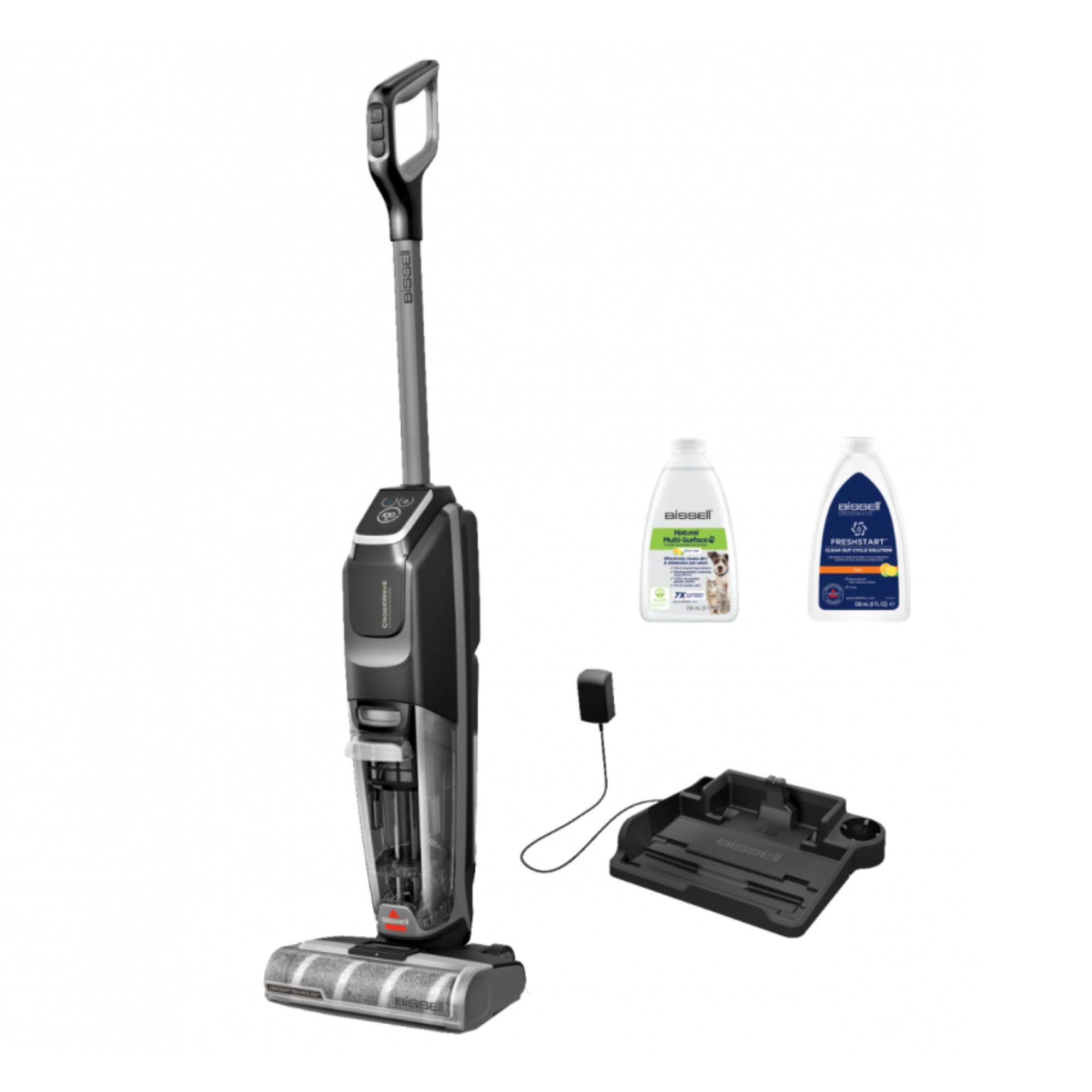
At the top spot in my vacuum mop guide is this model from Bissell, which is suitable for all sealed hard flooring and area rugs, and comes with seriously impressive edge cleaning, suction power and mopping ability. It has a 30-minute run time, and you can read my full review here.
Robot vacuum vs vacuum mop: What’s the difference?
Although both robot vacuum cleaners and vacuum mops will provide you with squeaky clean floors, they’re two very different appliances.
Robot vacuum cleaners offer a hands-free way to vacuum (and often mop) your carpets and hard flooring, which sets them apart from the best vacuum cleaners. The autonomous robots map your home using sensor technology to avoid obstacles and create a route for future cleaning, which you can control via an app without any other human interaction.
In fact, you can programme a robot vacuum to clean your home while you’re sleeping or even while you’re at work. And many - but not all - robot vacuums also come with a docking station that’ll automatically empty the dust and debris after it's finished cleaning. In the case of a robot vacuum mop, it’ll also auto-fill the water and often dry the mop pads when it returns to the base.
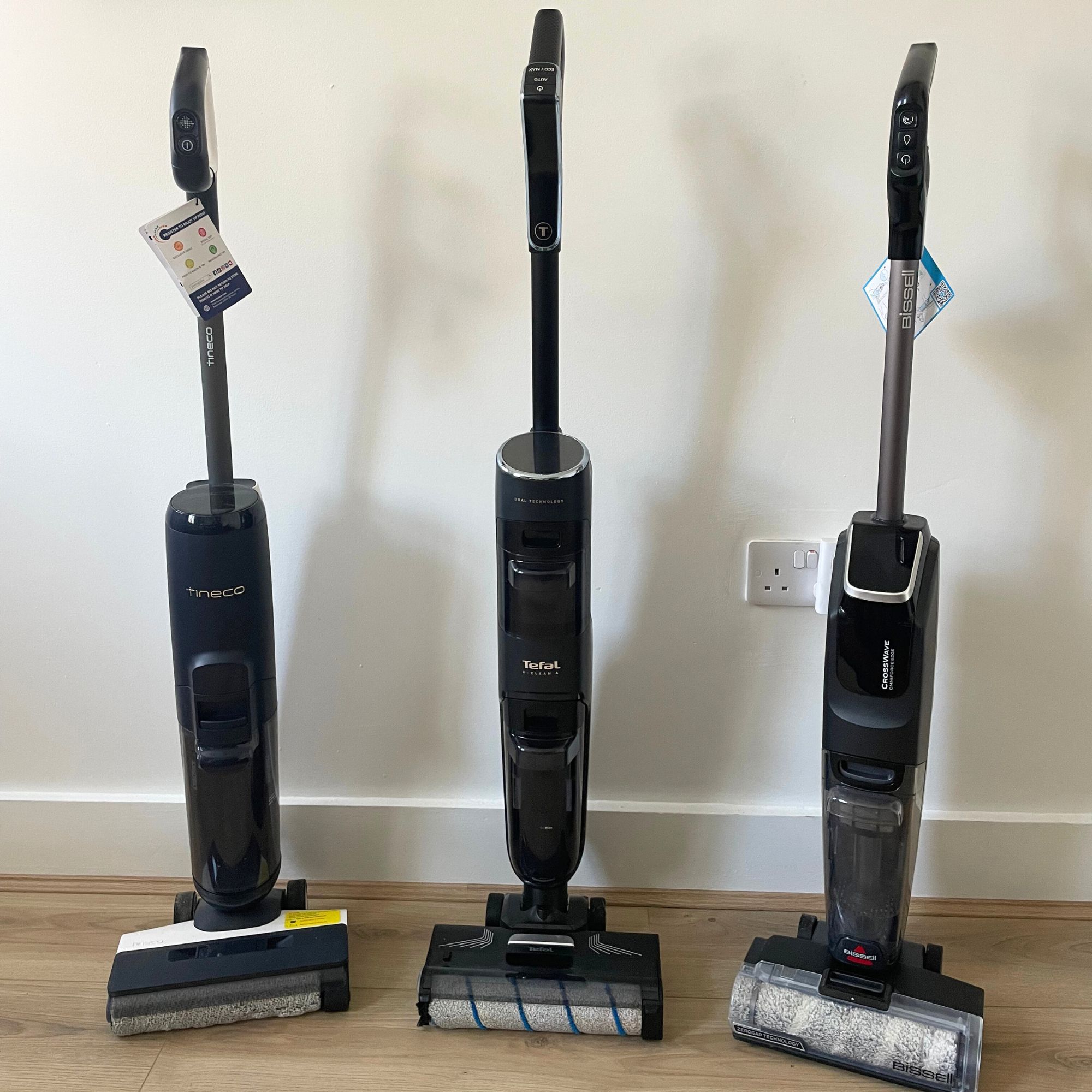
On the other hand, a vacuum mop is designed to handle both wet and dry debris simultaneously, vacuuming and mopping at the same time. It has tanks for clean water and dirty water, and it also plays the part of the best mops, negating the need for two separate cleaning tools.
Sign up to our newsletter for style inspiration, real homes, project and garden advice and shopping know-how
And while vacuum mops allow for both cleaning jobs to be completed at the same time, many models also allow you to separate them. Because of this, you could use it in Dry-Only Mode, which makes it similar to the best cordless vacuums, or you could just use it in Mop Mode for wet cleaning.
For the most part, vacuum mops will only tackle hard flooring, but some models do allow for the dry vacuuming of area rugs, too. And like a robot vacuum, they should also come with a charging or docking station where you can charge and store them when they’re not in use.
Robot vacuum vs vacuum mop: Which is easier to use?
Ultimately, robot vacuum cleaners and vacuum mops are both very easy to use, but there’s no denying that robot vacuums are significantly easier, as there’s very little need for you to interfere.
One thing everyone should know before buying a robot vacuum, however, is that it’s not completely hands-off. It’s always a good idea to declutter as much as you can before using a robot vacuum, as this will offer the best clean if you opt for a model that struggles with obstacle avoidance. In general, though, it couldn’t be easier to use a robot vacuum.
Once it’s mapped out your house, you leave it to its own devices. This is even easier when you have a user-friendly app - like with the Shark PowerDetect NeverTouch 2-in-1 Self-Empty & Self-Refill Robot Vacuum & Mop. You can choose everything from your cleaning mode to the rooms and areas you want to clean. On the app, you can also set schedules, so you don’t have to manually turn it on and off all the time.
Katie Lillywhite, floorcare expert at AO.com, adds, ‘Because of their slim design, they’re the opportune appliance to help tackle those hard-to-reach areas like beneath the sofa, furniture or any spots where an upright vacuum might struggle.’

On the other hand, vacuum mops aren’t autonomous. This means that you have to manually use it to clean your house and push it around from room to room. The controls aren’t complicated, though. Most vacuum mops come with just one or two buttons, as well as another button to initiate the self-cleaning function.
Many vacuum mops are also incredibly smart, and models like the Tineco FLOOR ONE S5 Smart Cordless Wet-Dry Vacuum Cleaner and Mop automatically adjust their cleaning power and roller speed based on the debris they face. So, if you’re cleaning a particularly dirty area of your house or a specific spill, it’ll amp itself up.
Being controlled by a human also leaves little room for error, as you can manage where you vacuum mop at all times. That’s where robot vacuums do struggle, as it is possible for robot vacuums to get stuck while they’re cleaning - and if that happens while you’re not at home or sleeping, you’ll wake up to a dirty house and a bot that’s run out of battery.
In general, though, robot vacuums are easier to use than vacuum mops, and both require a similar amount of cleaning and maintenance.
Robot vacuum vs vacuum mop: Which is more effective?
Everyone wants clean floors, and vacuum mops are becoming increasingly popular because they can handle wet messes, such as muddy paw prints, spilt drinks, and even the remnants of your morning porridge. When testing vacuum mops, I even assess their ability to suck up a raw egg - and they all pass with flying colours!
Because of this, a vacuum mop is extremely effective and could fully replace your mop if you really wanted it to. To aid their cleaning, many vacuum mops models - like the BISSELL CrossWave OmniForce Edge - also come with a dedicated cleaning solution which not only disinfects your floors, but also leaves them smelling clean and fresh.
However, a major disadvantage of vacuum mops is that they’re not as well-rounded as robot vacuums - especially if it’s a robot vacuum and mop. That’s because robot vacuums can clean your entire floor area (whether that’s carpet or hard flooring), while most vacuum mops will only tackle hard flooring. This means you’ll still need to have a vacuum on hand to vacuum your rugs and carpets regularly.
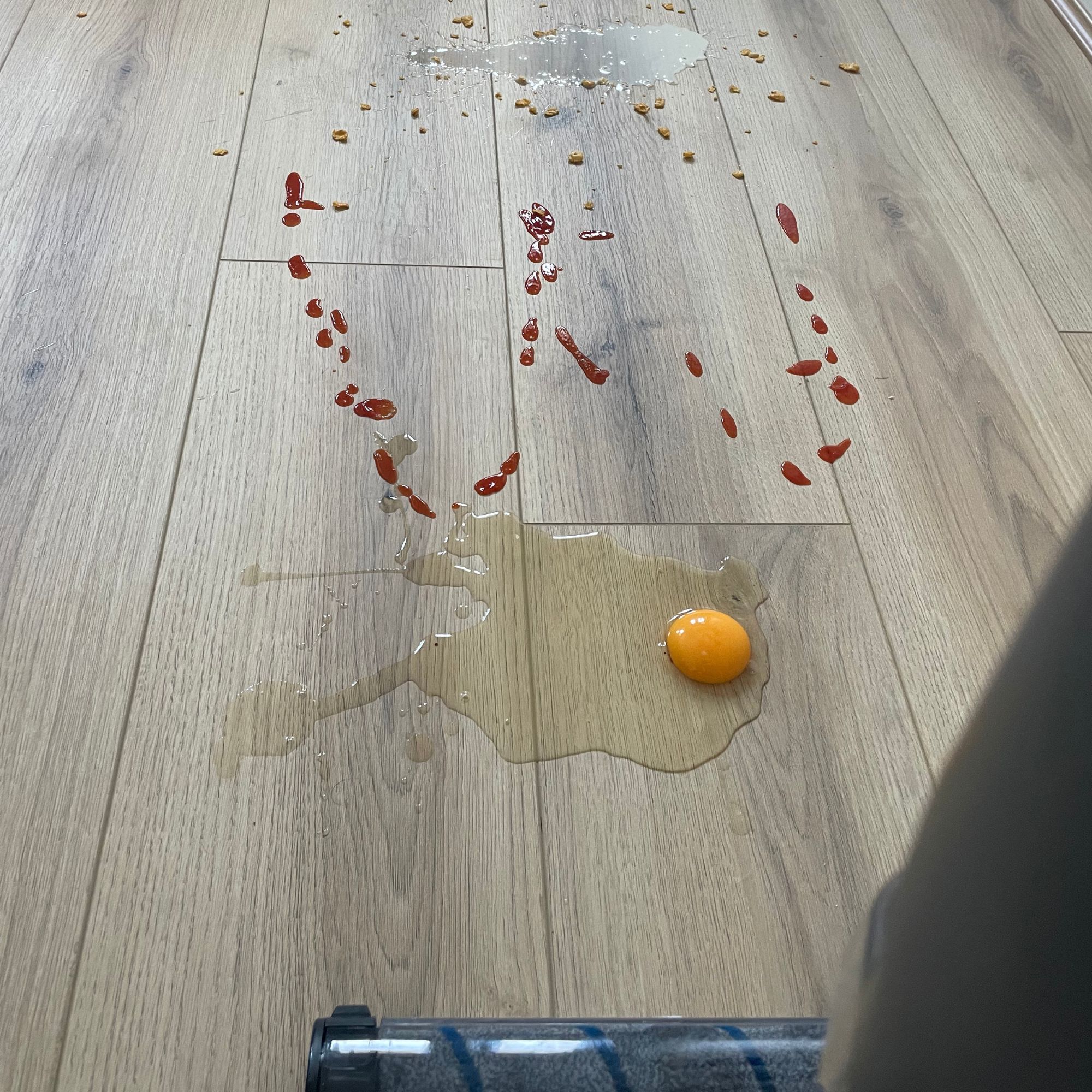
This is where robot vacuums really thrive, as they can tackle all different flooring types and offer an effective clean across the board. And while it’s not as common, many models also come with their own cleaning solution as standard - including the Eufy Robot Vacuum Omni E25, which has a compartment within the unit itself for the dedicated cleaner.
Of course, this does all depend on the type of robot vacuum you buy, though, as some robot vacuums only offer vacuum-only functions. This means you’ll still need to mop your floors. And as a robot vacuum can’t get into smaller corners, nooks and crannies or even vacuum your stairs, you’ll still need a regular vacuum to hand.
This is echoed by Katie, who also adds, ‘While robot vacuums are a great addition to any home, ultimately, they cannot match the deep-cleaning power of a full-size vacuum cleaner. Your robot vacuum is better suited for surface maintenance rather than a deep clean, and there are some spots of dirt that it simply cannot lift from your carpets.’
With this in mind, both robot vacuums and vacuum mops are effective in their own ways, and the winner would ultimately depend on your needs, cleaning requirements, and the layout of your house.
Robot vacuum vs vacuum mop: Which is more affordable?
I understand that price is a big factor in the robot vacuum vs vacuum mop debate, and the good news is that there are models to suit all budgets across the board.
In fact, the cheapest robot vacuum cleaner I’ve tested is the Hoover HG2 Turbo Slim Hydro Robot Vacuum Cleaner, which retails at £269. This model doesn’t have an auto-empty docking station, though, which means that you’ll need to empty the onboard dust bin regularly.
If you want a cheap robot vacuum with an auto-empty docking station, the SwitchBot K11+ Robot Vacuum with Mop (which is also the world’s smallest robot vacuum) is the second-most-affordable model I’ve tested.
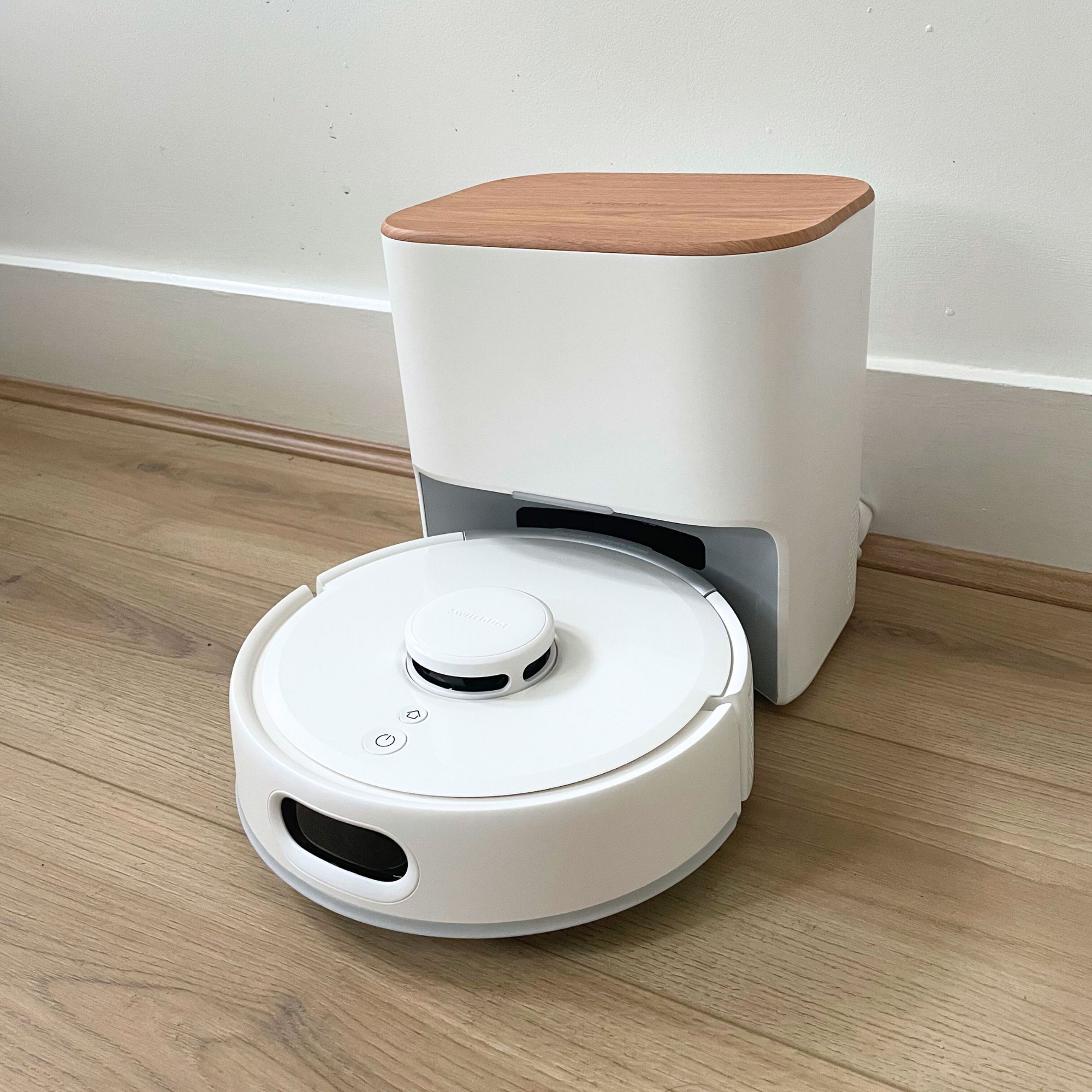
You always get more when you pay more, though, and if you want a robot vacuum with more bells and whistles, you’re looking at a price of between £500 - £1,000.
The most expensive robot vacuum cleaner we’ve tested at Ideal Home (so far) is the Samsung Bespoke Jet Bot Combo AI+ 3-in-1 Robot Vacuum Cleaner, which retails at £1,300. It’s worth noting that this model does come with advanced AI technology and steam-powered cleaning, which are all features that come at an extra cost.
On the other hand, the cheapest vacuum mop I’ve tested is the Shark VacMop Cordless 2-in-1 Vacuum Mop, which retails at just £99.99. However, this is a vacuum mop in its very basic form, and the vacuuming and mopping features can never be used at the same time.

For the most part, a high-quality vacuum mop will set you back around £400 - although you could pay a lot more for one if you really wanted to. For example, the Dyson WashG1 retails at £599.99 when it’s not on sale for less.
Because of this, it’s generally easy to bend your choice to suit your budget. But overall, vacuum mops tend to be cheaper than robot vacuums.
Verdict: Which one should you buy?
Although I’d love to tell you that there’s a simple answer to the robot vacuum vs vacuum mop debate, the reality is that it’s a very personal decision.
As someone who has not only tested dozens of them but has both in their home, I can personally tell you that a robot vacuum is my winner. I share my house with my husband and our dog, and I love the fact that I can pop the robot vacuum on to clean my house while I’m taking the dog for a walk, and it requires very little effort on my part.
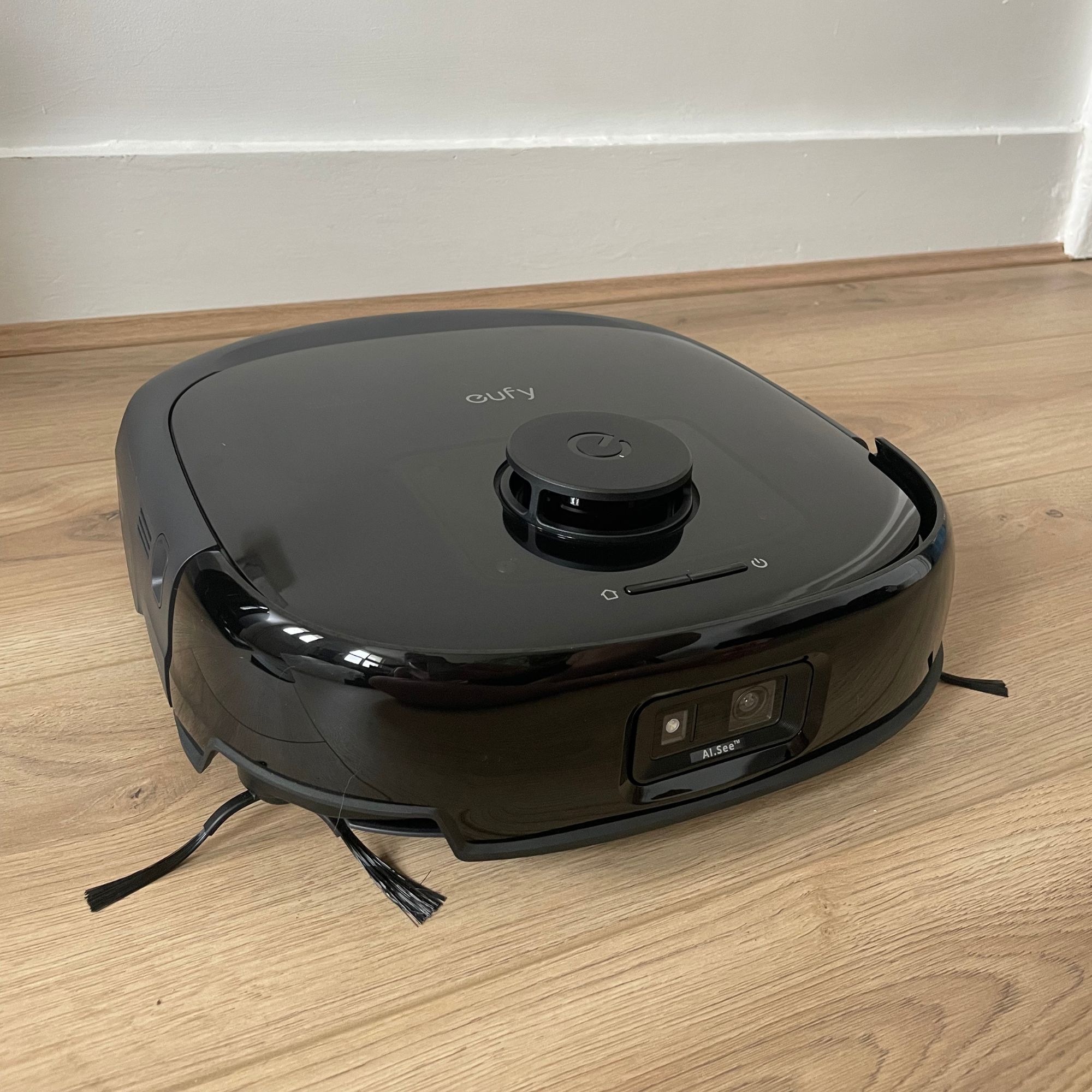
I also love that it vacuums and mops both my carpets and hard flooring in one fell swoop, meaning I rarely have to get my full-size vacuum cleaner anymore. However, when I asked my sister and sister-in-law the same question, they both opted for their vacuum mops instead.
It’s worth noting that they live very different lifestyles from mine, as they both have two young children who throw food on the floor at every meal and leave a mess in their wake every day. They love the fact that they can run their vacuum mops around their kitchens and living spaces to suck up wet and dry debris and leave sparkling, mopped floors in their wake.
Because of this, I’d suggest you consider your own home and cleaning requirements. If you deal with wet messes every so often, it may be that a robot vacuum and mop is enough to cover all of your bases. If you regularly deal with food spills and messes, though, I think a vacuum mop would suit you best.
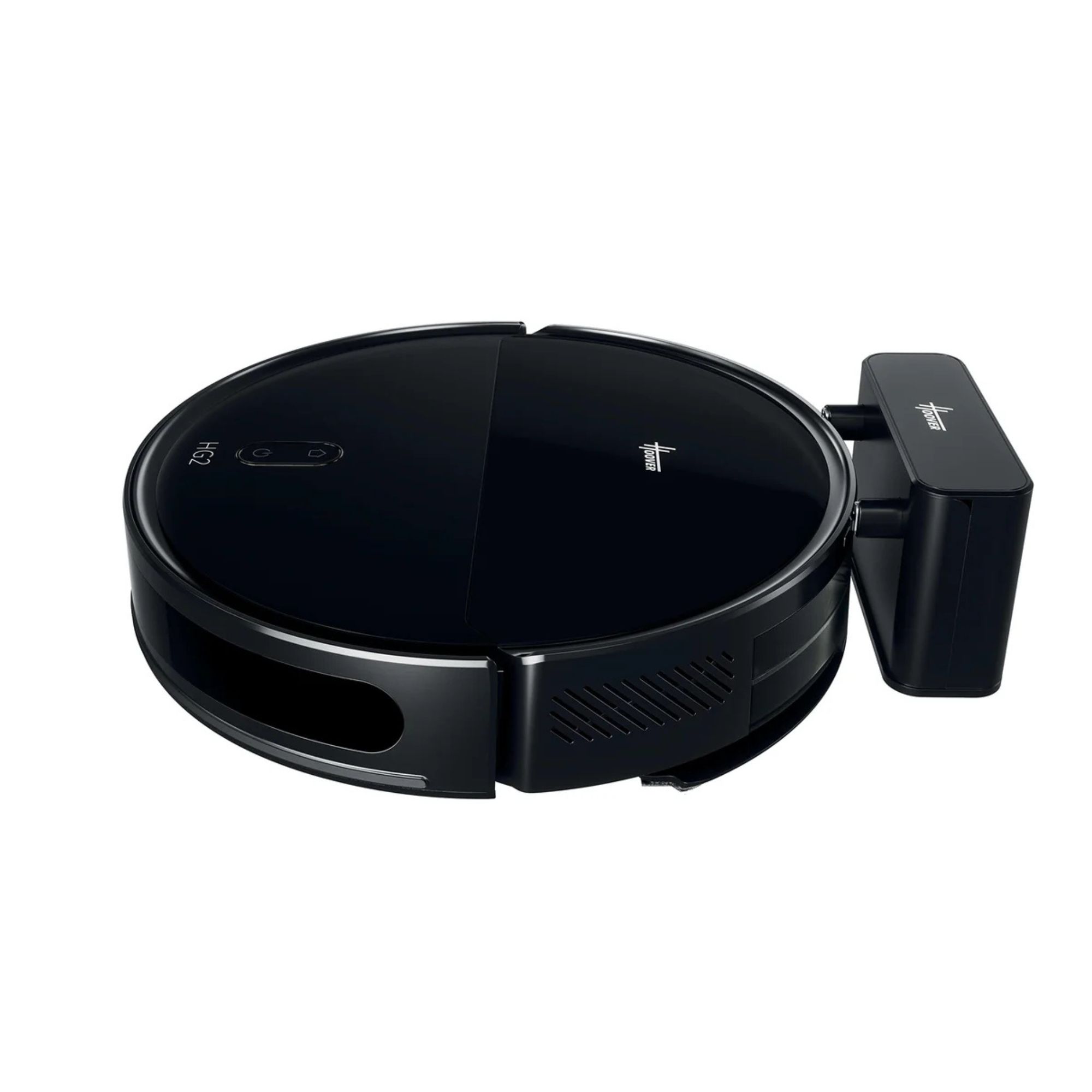
If you're unsure about robot vacuum cleaners and don't want to spend a lot of money to begin with, this Hoover model is a great entry-level model. It is a robot vacuum cleaner and mop, and while it doesn't come with an auto-empty docking station, it still offers an effective clean. Read my full review here.
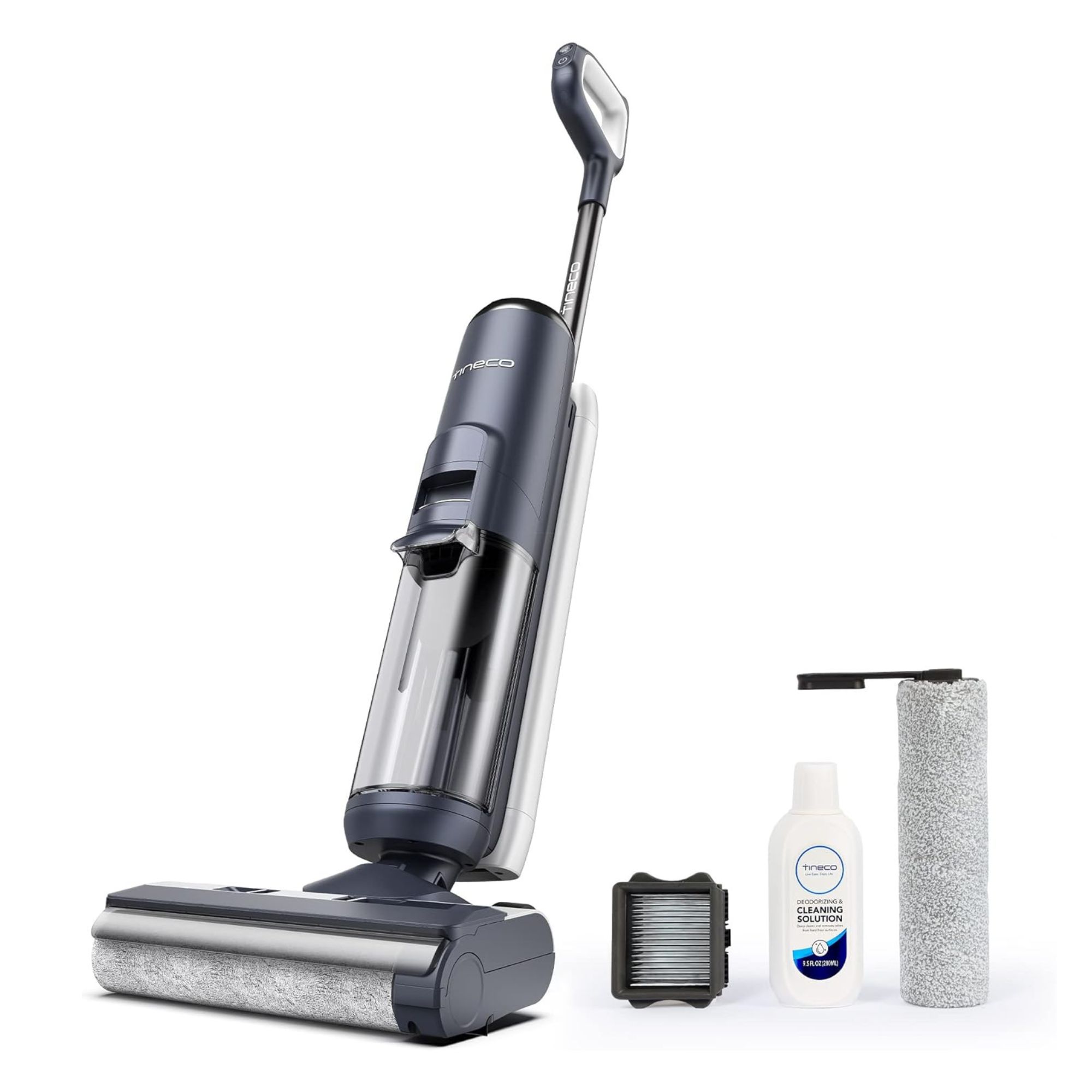
This smart vacuum mop is ideal for bigger messes, and will tackle both dry and wet debris with ease thanks to the auto-adjustable settings. It's also self-propelling, which means you barely need to touch it for it to glide over your floors and leave them sparkling. You can read my full review here.
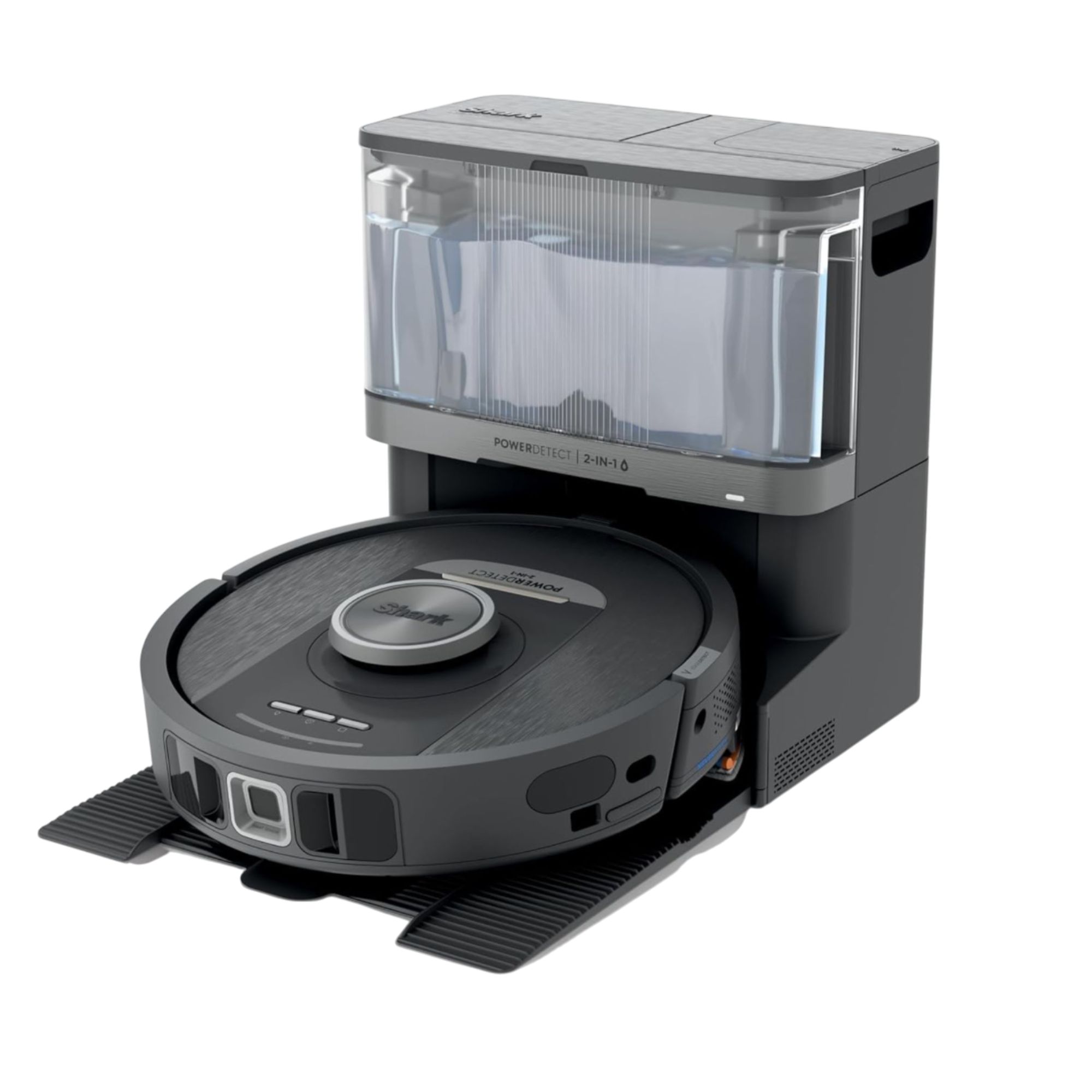
If you want an everyday, easy-to-use robot vacuum, I couldn't recommend this Shark robot vacuum and mop more. It's nice and small for more compact homes, and it'll automatically adjust suction power depending on the debris it faces. You can read my full review of it here.
FAQs
How many years will a robot vacuum last?
A robot vacuum should typically last around 5 years, but the exact lifespan will ultimately depend on a variety of different factors. This includes:
- The model you buy, as cheaper robot vacuums will typically be lower quality.
- How often you use it, as prolonged use will lead to more wear and tear.
- The cleanliness of your home, especially if it has to tackle more debris than the average home.
- How well it’s maintained, as dirt buildup in the dust bin and filters can affect efficiency.
What are the cons of a vacuum-mop?
The biggest con of a vacuum mop is that they typically only clean hard flooring, although some models will also tackle area rugs. This means that you’ll always need to use another vacuum cleaner to clean your carpets and stairs if you have them.
This might not be an issue for those who live in flats with only hard flooring, but it could be a downside for those who live in houses with multiple floor types.
Another con of vacuum mops is that most manufacturers recommend using a cleaning solution for an effective clean, but the options out there are limited. Only a few of them provide this cleaning solution, but they also advise against using DIY cleaners. So, finding a good middle ground can be difficult.
So, which one will you be buying?

Lauren Bradbury has been the Content Editor for the House Manual section since January 2025 but worked with the team as a freelancer for a year and a half before that. She graduated with a Bachelor’s degree in English and Creative Writing from the University of Chichester in 2016. Then, she dipped her toe into the world of content writing, primarily focusing on home content. After years of agency work, she decided to take the plunge and become a full-time freelancer for online publications, including Real Homes and Ideal Home, before taking on this permanent role. Now, she spends her days searching for the best decluttering and cleaning hacks and creating handy how-to guides for homeowners and renters alike, as well as testing vacuums as part of her role as the Ideal Home Certified Expert in Training on Vacuums, having spent over 110 hours testing different vacuum models to date!
You must confirm your public display name before commenting
Please logout and then login again, you will then be prompted to enter your display name.